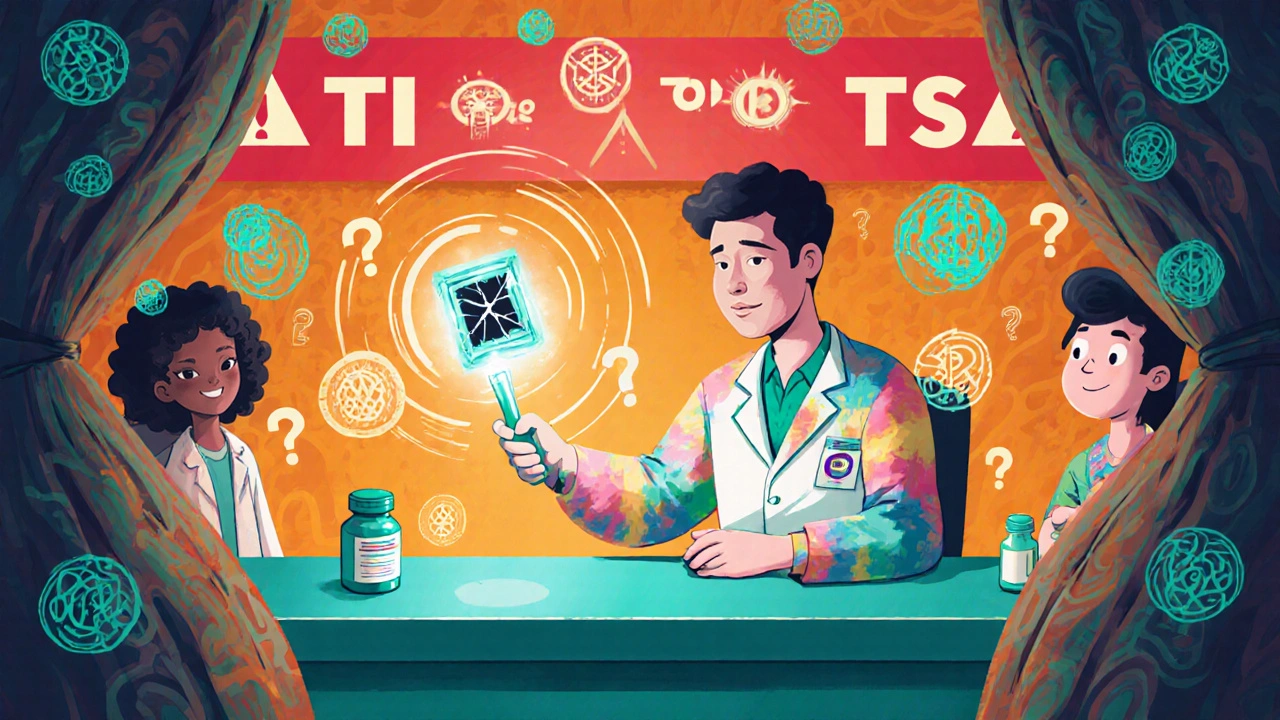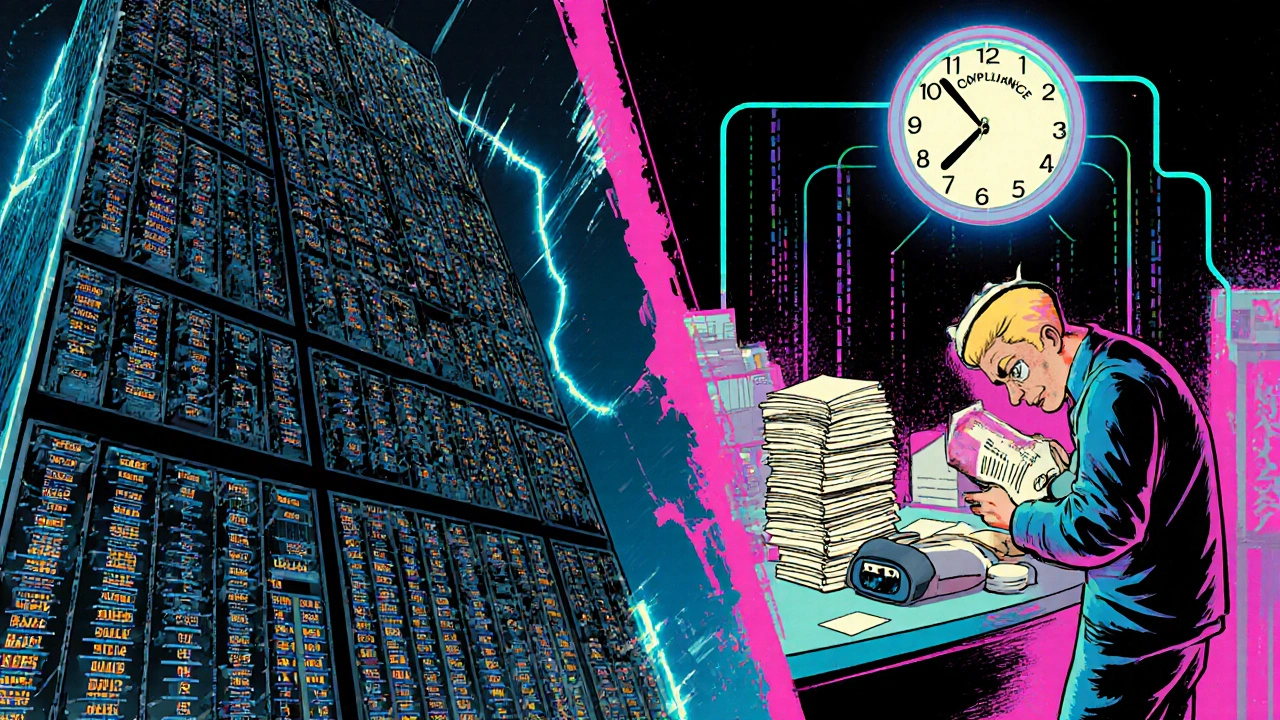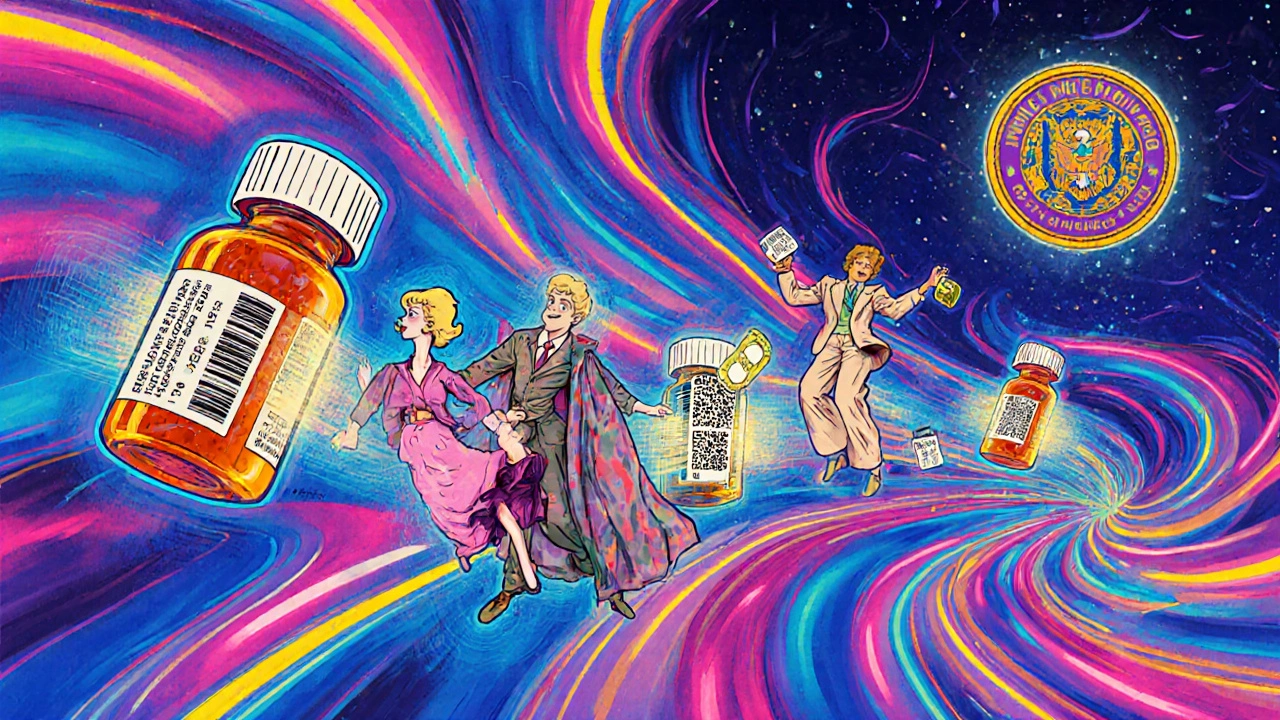The U.S. pharmaceutical supply chain handles over 5 billion prescription drug transactions every year. That’s a lot of pills, injections, and vials moving from factories to pharmacies. But somewhere in that chain, counterfeit drugs can slip in - fake versions of life-saving medicines that look real but contain the wrong ingredients, or none at all. Since 2013, the Drug Supply Chain Security Act (DSCSA) has been building a system to stop that. By November 27, 2024, every prescription drug package in the U.S. must be trackable from manufacturer to pharmacy - down to the individual bottle or box. This isn’t just bureaucracy. It’s a safety net designed to keep you from getting a fake heart medication, a contaminated insulin, or a counterfeit cancer drug.
What Exactly Is the DSCSA?
The DSCSA isn’t a single tool. It’s a federal law that forces every player in the drug supply chain - manufacturers, repackagers, wholesalers, and pharmacies - to use electronic systems to track prescription drugs. Before DSCSA, tracking was patchy. Some states had their own rules, others didn’t. A drug could move across state lines with no one knowing its full history. The law changed that. It created one nationwide standard, replacing 50 different state systems with a single, electronic trail. The goal? To make it impossible for counterfeit, stolen, or tampered drugs to move unnoticed. If a fake drug shows up, the system can trace it back to where it entered - and quickly pull it off shelves. The FDA calls it an "interoperable, electronic system" - meaning every company’s software must talk to every other company’s software, even if they use different platforms.How the Track-and-Trace System Works
Each prescription drug package now carries a unique identifier. That’s not just the National Drug Code (NDC) you might see on the label. It’s a 20-character serial number, the lot number, the expiration date, and a machine-readable barcode or QR code. Think of it like a digital fingerprint for each pill bottle. When that drug moves from manufacturer to wholesaler to pharmacy, three pieces of data travel with it:- Transaction Information (TI): What the product is, its serial number, lot, and expiration date.
- Transaction History (TH): Who handled it before, and when.
- Transaction Statement (TS): A digital certification that the transaction is legal and legitimate.
Why This Matters for Patient Safety
Counterfeit drugs aren’t just a theoretical threat. In 2018, the FDA found fake versions of the blood thinner Eliquis circulating in the U.S. In 2021, counterfeit insulin was discovered in multiple states. These aren’t lab experiments - they’re real products sold to real people. The DSCSA system has already made a measurable difference. According to FDA estimates, the serialized tracking system has reduced counterfeit drug incidents by 95% since its early rollout. Hospitals and pharmacies report faster, more targeted recalls. Instead of pulling every bottle of a drug off shelves, they can now isolate just the affected lots - saving money and preventing unnecessary shortages. A 2022 report from CVS Health showed their automated verification system cut suspect product investigations by 75%. McKesson, one of the largest distributors, processed over 1.2 billion serialized transactions with 99.98% accuracy by 2023. That’s not luck. It’s the system working as designed.
Who’s Compliant - And Who’s Struggling?
Big companies got there first. As of mid-2023, 98% of drug manufacturers and 95% of wholesale distributors had full serialization systems in place. Chain pharmacies like Walgreens and CVS spent hundreds of millions on upgrades. Walgreens alone invested $120 million in DSCSA tech between 2021 and 2022. But smaller pharmacies are still catching up. A 2023 survey by the National Community Pharmacists Association found that only 72% of pharmacies had fully compliant verification systems. For independent pharmacies, the cost of upgrading software, scanners, and staff training averages $185,000. That’s a huge burden for a single-location business. The result? A two-tier system. Chain pharmacies, which serve about 70% of U.S. prescriptions, are mostly covered. Independent pharmacies - the local drugstores you walk into - are still at risk of falling behind. The FDA has extended deadlines and offered guidance, but the clock is ticking. By November 2024, every pharmacy must be able to verify any drug package it receives - or risk being shut out of the supply chain.Biggest Problems in the System
The technology works - when it works. But real-world use has exposed some serious gaps. One major issue: data mismatches. A pharmacy receives a shipment. The serial number on the box doesn’t match the number in the electronic record. Why? Maybe the manufacturer entered it wrong. Maybe the wholesaler’s system glitched. Maybe the barcode got smudged during shipping. These mismatches cause delays - sometimes 2-3 days - while the pharmacy investigates. That means patients wait longer for their meds. Another problem: interoperability. Not all software vendors talk to each other cleanly. TraceLink, SAP, and Oracle dominate the market, but smaller systems still struggle to exchange data with the big ones. A 2022 survey found that 42% of companies reported "significant data mismatches between trading partners" as their top hurdle. And then there’s the human factor. Pharmacists aren’t IT specialists. Training staff to handle verification alerts, quarantine suspect products, and file reports takes time. The FDA requires detailed investigations - including forensic testing in some cases - which many small pharmacies aren’t equipped to do.
What Happens After November 2024?
The November 27, 2024 deadline isn’t the end. It’s the starting line. The FDA has declared a "stabilization period" - one year after the deadline - to let the system settle. Enforcement will ramp up slowly. But the goal is clear: full electronic traceability at the package level, with no paper trails. Looking ahead, the FDA is already considering expanding DSCSA to over-the-counter (OTC) drugs - especially high-risk ones like painkillers, asthma inhalers, or diabetes test strips. The same tracking logic could apply. Long-term, experts predict DSCSA-compliant systems will cut counterfeit drug incidents by 90% by 2027 and save the system over $2.3 billion a year through fewer recalls and less drug diversion. That’s money saved on wasted inventory, legal fees, and patient harm.What You Can Do
As a patient, you don’t need to understand EPCIS or serial numbers. But you can stay alert. If you notice your prescription looks different - different color, shape, or packaging - ask your pharmacist. If the bottle feels tampered with, or the label looks off, speak up. Pharmacists are now trained to verify every package they receive. They’re your last line of defense. And if you’re buying medications online? Only use pharmacies that are verified by the National Association of Boards of Pharmacy (NABP). Many counterfeit drugs enter the U.S. through rogue websites. DSCSA won’t fix that - but it will make it harder for fakes to slip through the legal supply chain.Final Thoughts
The DSCSA isn’t perfect. It’s expensive, complex, and still has glitches. But it’s the most serious effort the U.S. has ever made to secure its drug supply. It turns a broken, opaque system into one that’s transparent, accountable, and traceable. By 2025, if you get a prescription filled, you can be more confident than ever that what’s in that bottle was made legally, shipped legally, and hasn’t been tampered with. That’s not just a technical win. It’s a public health win.What is the DSCSA and why was it created?
The Drug Supply Chain Security Act (DSCSA) is a U.S. federal law passed in 2013 to prevent counterfeit, stolen, or contaminated drugs from entering the legal pharmaceutical supply chain. It was created after a rise in fake medications - like counterfeit insulin and blood thinners - reached patients. The law requires every company handling prescription drugs to use electronic systems to track each package from manufacturer to pharmacy, ensuring only legitimate products reach consumers.
What does "serialized tracking" mean?
Serialized tracking means each individual drug package - like a bottle of pills or a vial - gets a unique serial number, along with its lot number, expiration date, and National Drug Code (NDC). This creates a digital fingerprint for every unit. When the drug moves through the supply chain, this data is shared electronically so anyone receiving it can verify it’s real and hasn’t been tampered with.
Who has to comply with DSCSA?
Everyone in the prescription drug supply chain must comply: manufacturers, repackagers, wholesale distributors, and dispensers (like pharmacies and hospitals). Each has specific obligations - manufacturers must serialize packages, wholesalers must verify them, and pharmacies must scan and confirm each item before giving it to patients.
What happens if a pharmacy finds a suspect product?
If a pharmacy scans a drug and the system flags it as suspect - meaning the serial number doesn’t match, the lot expired, or the transaction history is missing - they must immediately quarantine the product. Then they must notify the previous trading partner and the FDA. They’re required to investigate further: checking serial numbers against manufacturer databases, testing the product if needed, and reporting the issue. Failure to do so can result in FDA enforcement actions.
Is DSCSA the same as the EU’s FMD?
No. The European Union’s Falsified Medicines Directive (FMD) requires anti-tampering seals and a central European database where all serial numbers are stored. DSCSA doesn’t use a central database. Instead, it relies on direct electronic communication between trading partners - manufacturers, wholesalers, and pharmacies - to verify each transaction. DSCSA focuses on data exchange, while FMD adds physical security features.
Will DSCSA apply to over-the-counter (OTC) drugs?
Not yet, but the FDA is actively evaluating it. Commissioner Robert Califf has indicated the agency is considering extending track-and-trace requirements to certain high-risk OTC products - like painkillers, asthma inhalers, or diabetes test strips - especially those that have been targeted by counterfeiters in the past. Any expansion would likely happen after the 2024 deadline is fully implemented.
How much does DSCSA compliance cost a pharmacy?
For large chain pharmacies, costs ran into the hundreds of millions. For independent pharmacies, the average cost to upgrade systems, scanners, and train staff is around $185,000. This includes software licenses, hardware like barcode scanners, integration with existing pharmacy systems, and ongoing maintenance. Many small pharmacies struggled with this expense, which is why compliance rates are lower among independent operators.
What are the biggest technical challenges with DSCSA?
The biggest issues are data mismatches - when the serial number on the package doesn’t match the electronic record - and poor interoperability between different software systems. Many pharmacies use different vendors than their suppliers, and not all systems communicate cleanly. This causes delays in verification, sometimes taking 2-3 days to clear a shipment. The FDA and industry groups are working to fix these gaps before the November 2024 deadline.
Can I check if my prescription is real?
You can’t directly verify a drug’s serial number yourself - that requires access to manufacturer databases and specialized scanners. But you can ask your pharmacist. If your medication looks different from previous fills - different color, shape, or packaging - ask them to confirm it’s legitimate. Pharmacists are now required to verify every package they receive. If something seems off, trust your instincts and speak up.
What happens if a company doesn’t comply with DSCSA?
Non-compliance can lead to FDA enforcement actions, including warning letters, fines, or being blocked from receiving or distributing drugs. In 2022, the FDA issued a warning letter to a regional distributor for failing to investigate and report suspect products - a direct violation of DSCSA. Companies that don’t meet the 2024 deadline risk being cut off from the legal supply chain, which could shut down their business.
